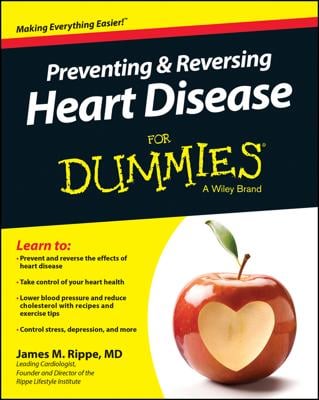The heart is located in the center of the chest cavity, just to the left of the midline of the body. You need to understand the following important parts:
The heart muscle: Called the myocardium (myo = muscle and cardium = heart; pronounced my-o-car-dee-um), this muscle contracts and relaxes to pump blood throughout the cardiovascular system.
The coronary arteries: Three large coronary arteries and their many branches deliver a continuous supply of oxygenated blood to the heart. Narrowing of these arteries causes chest pain; blockage causes heart attack.
![[Credit: Illustration by Kathryn Born]](https://www.dummies.com/wp-content/uploads/464162.image0.jpg) Credit: Illustration by Kathryn Born
Credit: Illustration by Kathryn BornThe pumping chambers: The heart’s job is to pump blood to the lungs to get oxygen and to pump the oxygenated blood to the rest of the body. To fulfill these tasks, the heart has a left and a right side, each with one main pumping chamber called a ventricle located in the lower part of it. Sitting above the left and right ventricles are two small booster pumps called atria (or atrium, when you’re talking about just one).
The right ventricle pumps deoxygenated blood from the body to the lungs to receive a new supply of oxygen and back to the heart, through the left atrium to the left ventricle. The left ventricle pumps oxygenated blood through the arterial system to the rest of the body where it feeds every single living cell. Various disease conditions can damage each of these structures.
![[Credit: Illustration by Kathryn Born]](https://www.dummies.com/wp-content/uploads/464163.image1.jpg) Credit: Illustration by Kathryn Born
Credit: Illustration by Kathryn BornThe valves: Four valves regulate the flow of blood in and out of the heart and from chamber to chamber. They act a bit like cardiac traffic cops by directing the way blood flows, how much of it flows, and when to stop it from flowing. Disease and injury can cause heart valves to leak, narrow, or otherwise malfunction, disrupting the heart’s ability to pump blood efficiently.
The electrical system: This electrical system is controlled by a group of specialized cells that spontaneously discharge, sending electrical currents down specialized nerves and tissues, causing the heart to contract. When any of these electrical structures becomes diseased or disordered, arrhythmias (ay-rith-mee-uhz), or heart rhythm disturbances, occur.
The pericardium: The entire heart is positioned in a thin sac called the pericardium (peri = around and cardium = heart; pronounced per-ry-car-dee-um). Fluid within the sac lubricates the constantly moving surfaces. Inflammation of the pericardium from an infection or other cause causes pericarditis. Build-up of excess fluid inside the pericardium can cause problems with how the heart functions, a condition called cardiac tamponade.

